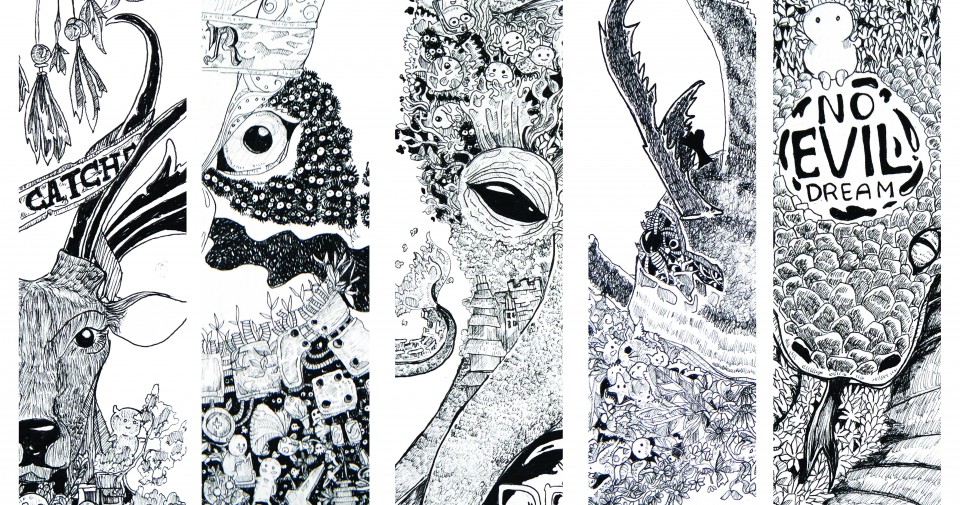The word denotation and connotation is used to describe the relationship between the signifier and the signified. It makes a clear distinction between both of denotative and connotative signified. But what does actually denotation and connotation mean in the world of semiotic.
Denotation terms can be said as describing the definition in obvious way. We often find that the denotation comes after the dictionary, means that the word is described as what it is. It can be said as providing meaning based on dictionary. We describe what we see as what it is. As an example, we describe Monalisa painting as a girl painting, a painting of a beautiful woman, created by famous artist, etc.
In contradiction, connotation comes after analysis of what we see. We describe the thing we see based on our view with some adjustment to our culture. It is associated with our ideology, emotion, belief, and the other else. We interpret the things and then make a description based on our interpretation. Example, we see a painting of Monalisa, we observe and then give our opinion. Regardless the look, we might add some description, for instance the painting based on the most beautiful woman in that era, the woman holds dear to the artist when you see her eyes, etc.
In some new media, how does connotation and denotation linked to the image? As we are studying semiotic, let us take the photography as an example. Barthes argued that photography connotation can be distinguished in the form of denotation (Barthes 1997). The denotation is what is being photographed, and the connotation will be how it is photographed. However, the photography appears to be a natural sign, that means the signifier identically with its signified. In the 1973, Barthes shifted his ground. He comes to a conclusion that the denotation is not the first meaning, but it is pretending to be the first meaning. Connotation produce short of illusion of denotation. Denotation lost its “natural” observation and it becomes a process of “naturalization”.
Connotation and denotation are often described in the term of level of representation. Barthes mentioned that there is different order of signification. The first one is denotation; the sign consists of signifier and signified. The second one is connotation that uses denotative as its signifier and attached to the additional signified. He suggests that the denotation is an underlying meaning.
The connotation is not a pure paradigm dimension. The connotation of the signifier often related in part to the other signifier. The denotation and connotation are a subject, it is not only a socio-cultural, but also a historical factor. Time change and so do connotation and denotation. As we were known that “Black” term was in negative view before, but now “Black” can be means different as what we used to know. It is not always given negative meaning that we cannot change it. We can change the meaning of any sign if we want to.
Barthes refers one connotation as myth. People associate myth with several legend or fable around their country. Believing in magic and how something can be created through abra kadabra. However, in Barthes perspective, he believed that myth is the dominant ideology in any time. Sign and codes are generated in myth and both of them born to maintain the identity of the myth. Myth is extended metaphors. As a metaphor, myth help us to make sense of experience within the specific culture. Myth serves the function of naturalization. Its function is to naturalize the culture. It means that to make any dominant culture (history, belief, and value) into natural or normal. Myth can also function as hiding element. It hides the ideological function of sign and codes. This power can be said as the power that “go without saying anything” and it can appear anytime it wants without need to be deciphered.
The study of connotative, denotative, and myth is all regarding how we see a visual image or sign and relate it within socio culture, belief, and value, while we also describe it as natural as it is. Denotative will describe what we see first, and connotative will relate what we see with several factors like belief, religion, beauty, environment, etc. while Myth associated with specific culture that evoke in the situation. All of those are related each other to our perspective viewing the world. It might seem hard to understand, but with our common sense, it is merely easy to be understand.
Reference
Barthes, Roland. “DENOTATION, CONNOTATION & MYTH.” Rhetoric and Myth, 1987. Accessed September 22, 2016.
Barthes, Roland. “RHETORIC OF THE IMAGE.” Rhetoric and Myth, 1977. Accessed September 22, 2016.
Chandler, Daniel. “Semiotics for Beginners.” March 7, 2014. Accessed September 22, 2016. http://visual-memory.co.uk/daniel/Documents/S4B/sem06.html.
